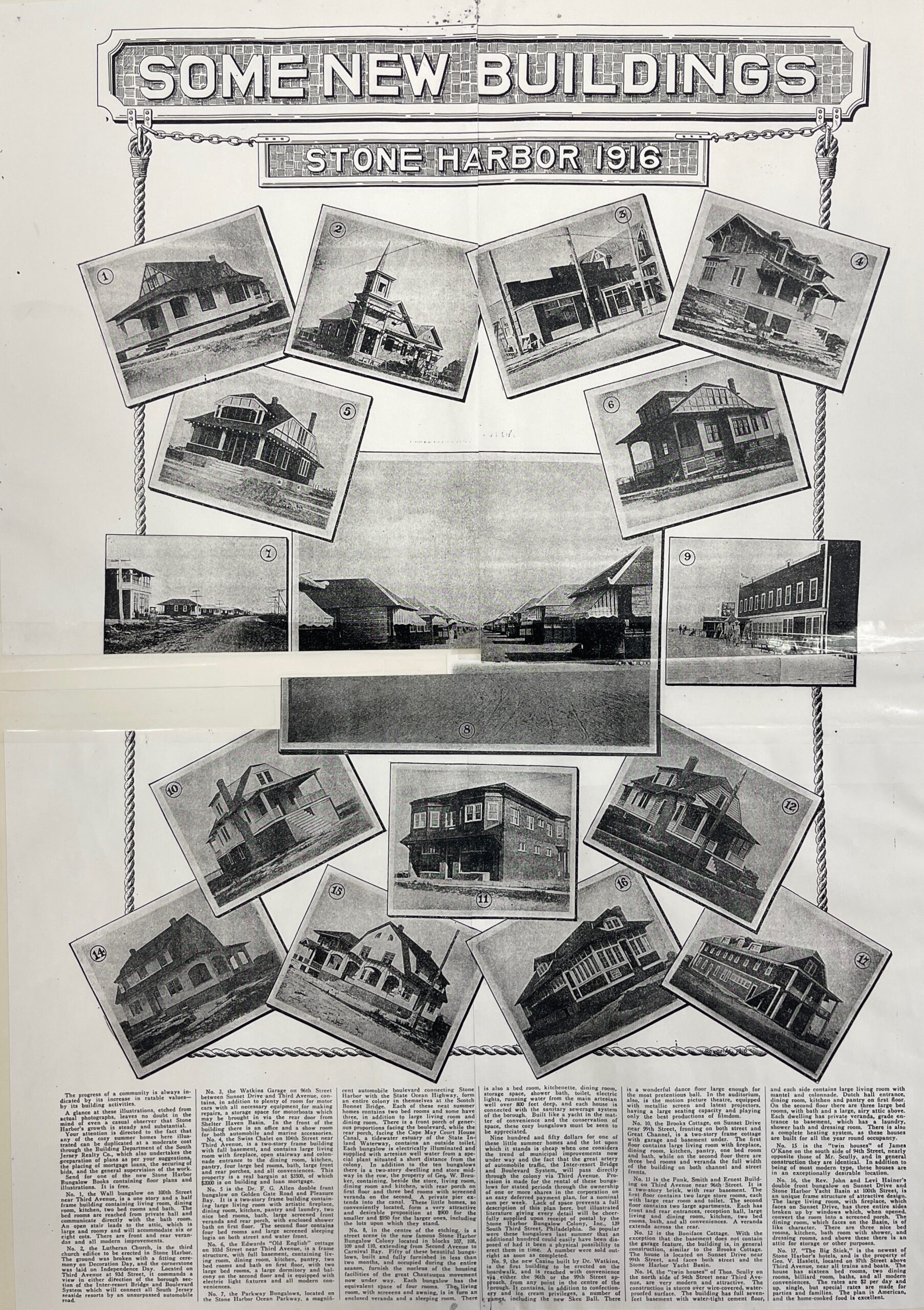
FOREWORD: The Stone Harbor of 1907 was confined to just the 83rd Street area and only included a dozen cottages, built and occupied by summer sojourners and a family or two of permanent residents who, with the true pioneer spirit, had established the nucleus of a settlement on the beach.
DESCRIPTION: With reference to the composite photo image above, this post is essentially a reproduction of what is considered a creative and promotional “broadside”. In other words, the broadside is a sizable sheet of paper printed on one side containing very specific information similar to an advertisement. In this case our account is about a total of 16 relatively new buildings that were constructed in Stone Harbor in the very early years.
THE STORY BEGINS: Please keep in mind that by 1910 the promotional efforts of the South Jersey Realty Company resulted in 52 permanent families in residence. In just the next 4 years, Stone Harbor would be incorporated, become a Borough and create and subscribe to a Mayor-Council form of government.
Furthermore and as time went on, it could be said that notably the progress of the community of Stone Harbor was always indicated by its increase in ratable values – in other words, by its building activities. It became readily apparent that six years of steady progress had been achieved. It was the much heralded season of 1914 that was announced as the biggest, best and most successful season in the brief history of Stone Harbor. It was also the biggest in point of numbers of visitors; it was the best in point of facilities for enjoyment; and the most successful in point of prosperity, progress and the solid growth of the resort with unprecedented building activity and greatest amount of investment.
A glance at all these various 16 images, etched from actual photographs, leaves no doubt in the mind of even a casual observer that Stone Harbor’s early growth and development was steady and substantial. By the year 1916, the documented information provided herein will shed light on the important developments that had occurred as Stone Harbor was getting traction and making significant progress.
According to this particular broadside, your attention is directed to the fact that any of the cozy summer homes depicted were available and could actually be duplicated at a moderate cost by contacting the Building Department of the South Jersey Realty Co., which at that time undertook the preparation of plans as per an interested party’s suggestions as well as the placing of mortgage loan, the securing of bids, and the general supervision of the work and actual construction. Furthermore, interested investors were directed to send and request one of the new Stone Harbor Bungalow Books containing specific floor plans and many illustrations, free of charge.
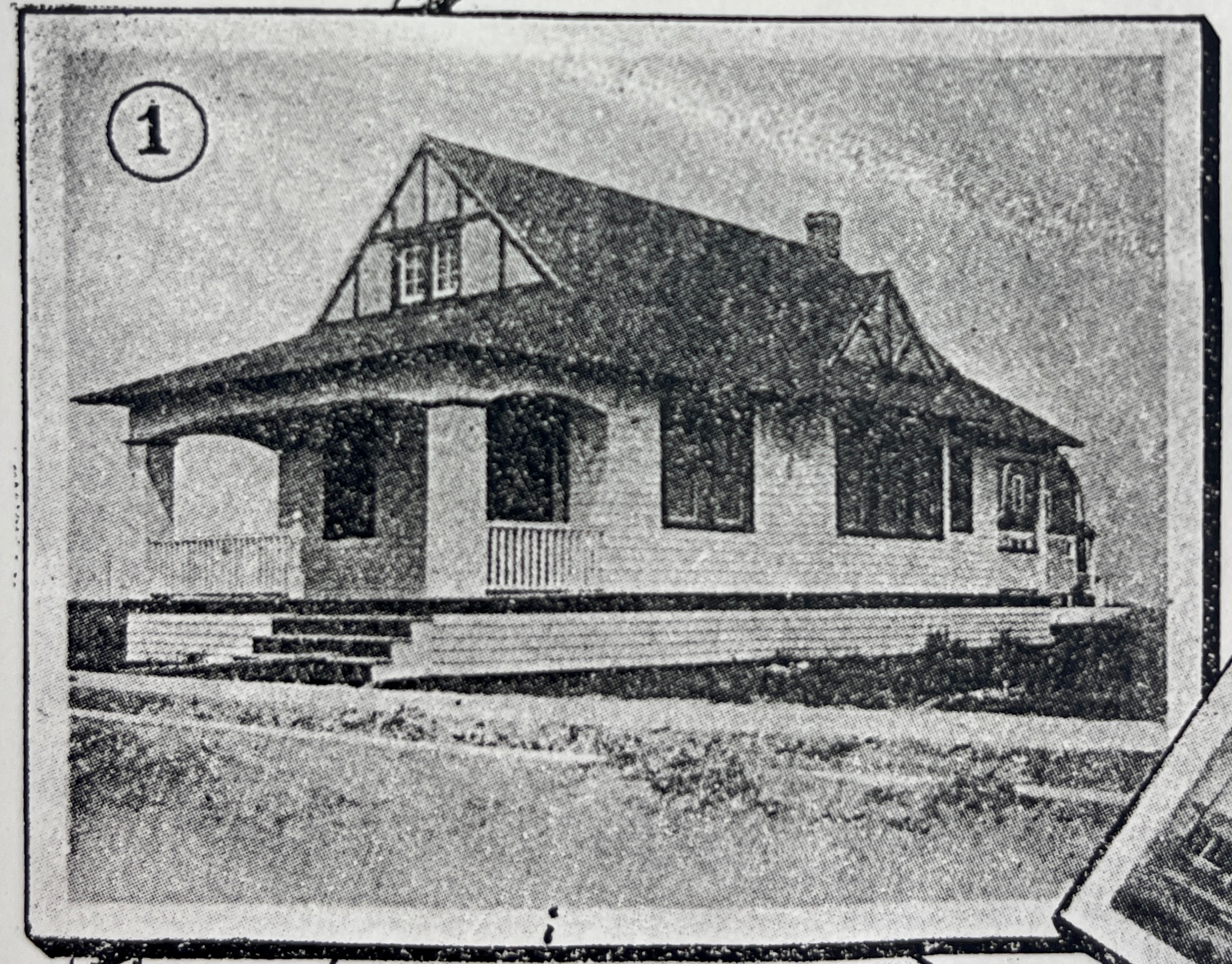
Image No. 1: The Wall bungalow located on 100th Street near Third Avenue was described as a one story and a half frame building containing living room, dining room, kitchen, two bedrooms and bath. The bedrooms could be reached from a private hall and communicate directly with the bathroom. There was an open stair that leads to the attic, which was large and roomy and could even accommodate six or eight cots for sleeping. There were also front and rear verandas as well as all modern improvements.
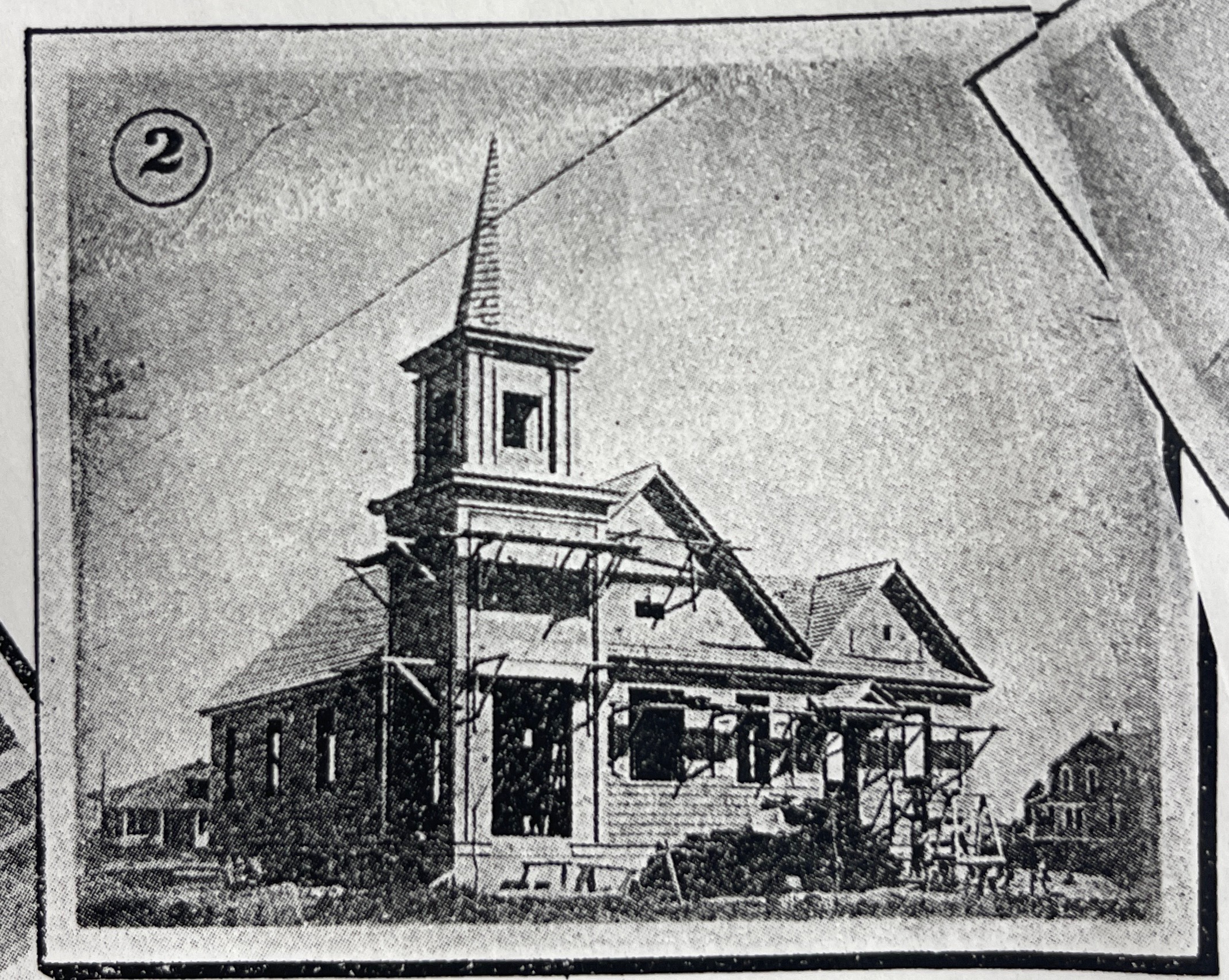
Image No. 2: Looking closely, you should be able to see the Lutheran Church of Our Savior shown above with scaffolding as it is nearing its final stage of completion. This church represented the third church edifice to be erected in Stone Harbor. The ground was broken on a fitting ceremony on Decoration Day which we now call Memorial Day and the cornerstone was laid on Independence Day or the Fourth of July. Located on Third Avenue at 93rd Street, the new church commands a view in either direction of the borough section of the Inter-resort Bridge and Boulevard System which connected all South Jersey seaside resorts by an unsurpassed automobile road.
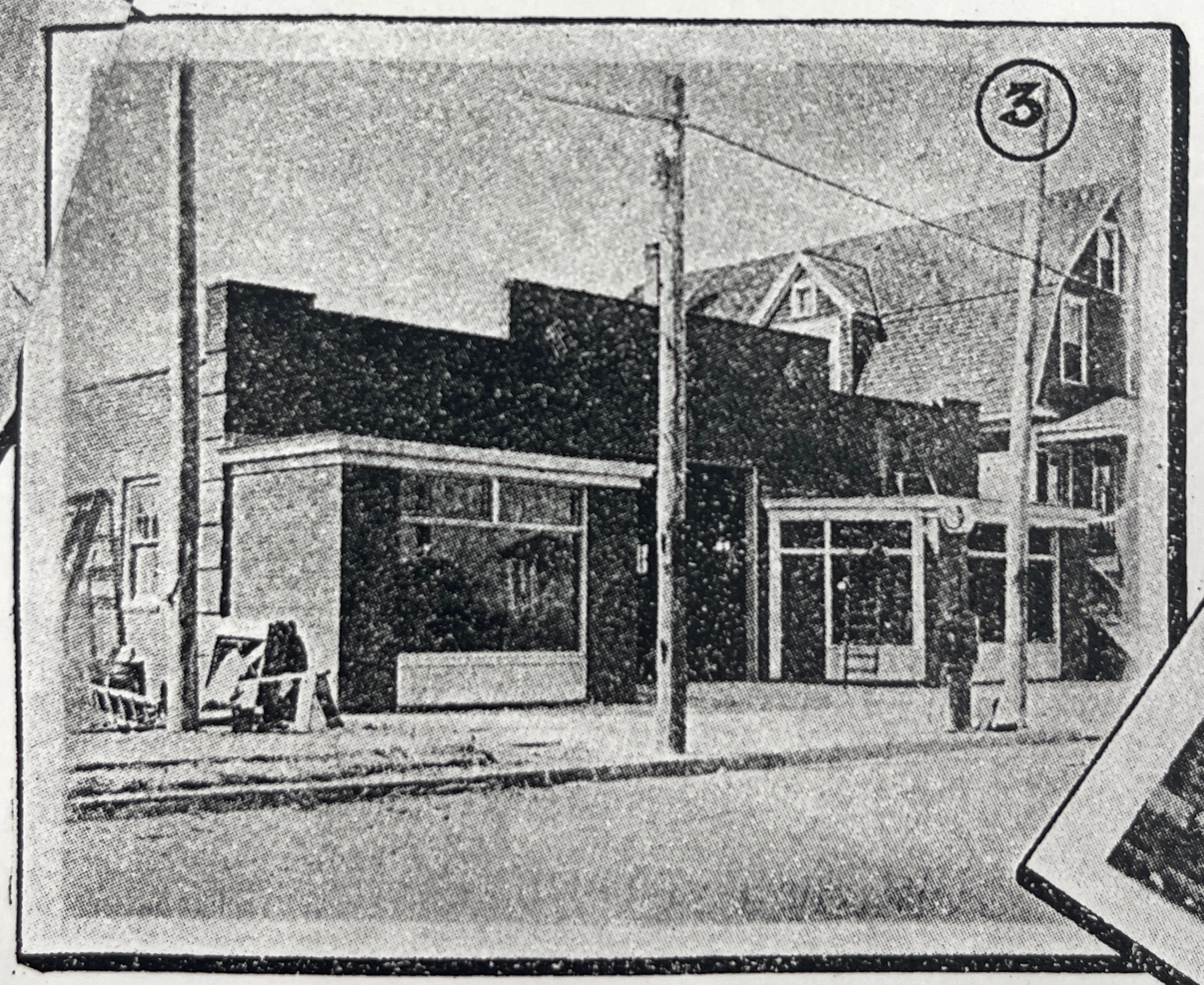
Image No. 3: Here we see the Watkins Garage on 96th Street between Sunset Drive and Third Avenue. In addition to plenty of room for motor cars with all necessary equipment for making repairs, there is a storage space for motorboats which may be brought in via the rear door from the Shelter Haven Basin. In the front of the building there was also an office and a show room for both automobile and marine accessories.
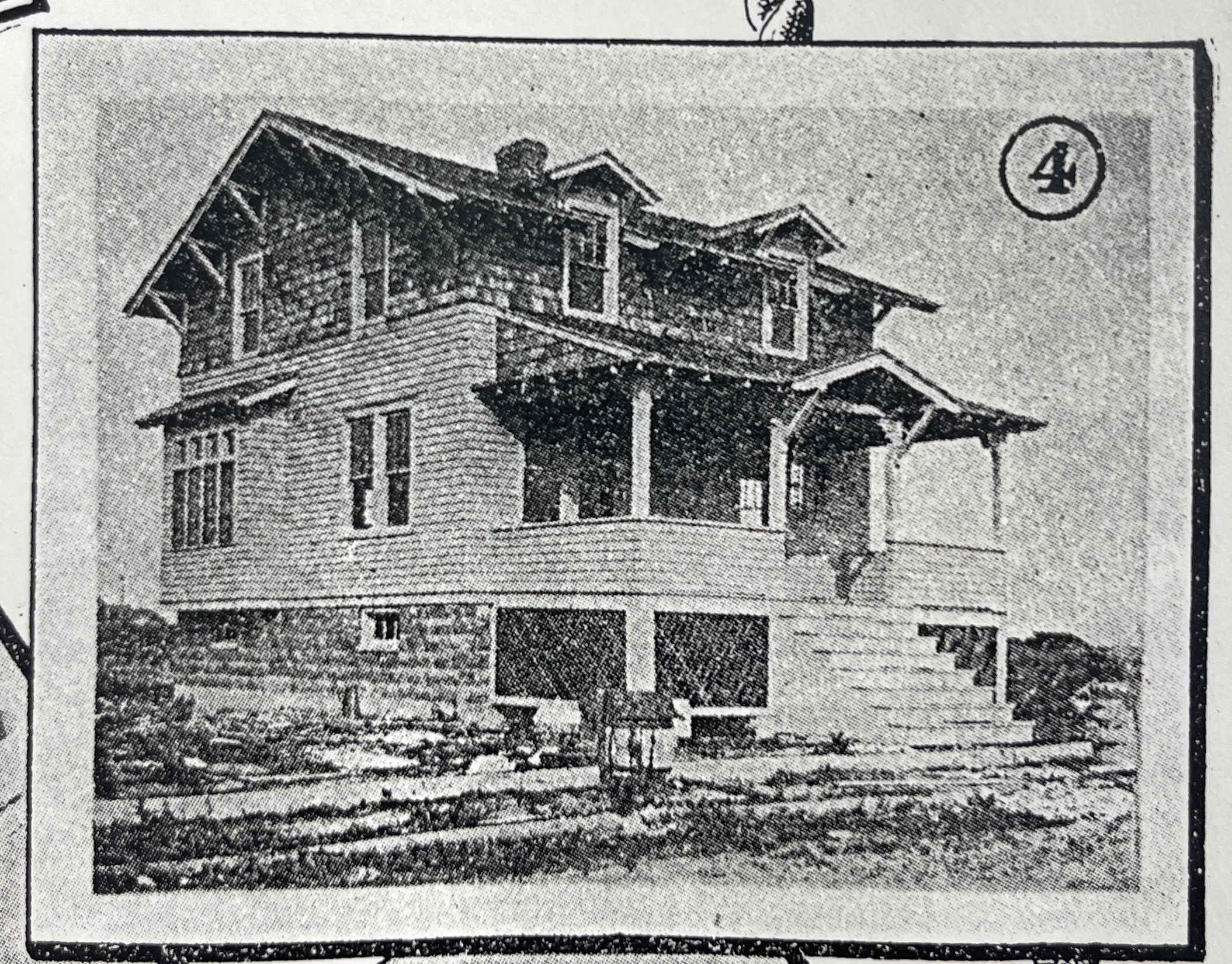
Image No 4: This next building is the remarkable Swiss Chalet on 104th Street near Third Avenue. It is a two-story frame building including a full basement and contains a large living room with fireplace, open stairway and colonnade entrance to the dining room, kitchen, pantry, four large bed rooms, bath, large front and rear porches, and all conveniences. This property was for sale at the bargain price of $3,500, of which $2,000 was on the building and loan mortgage.
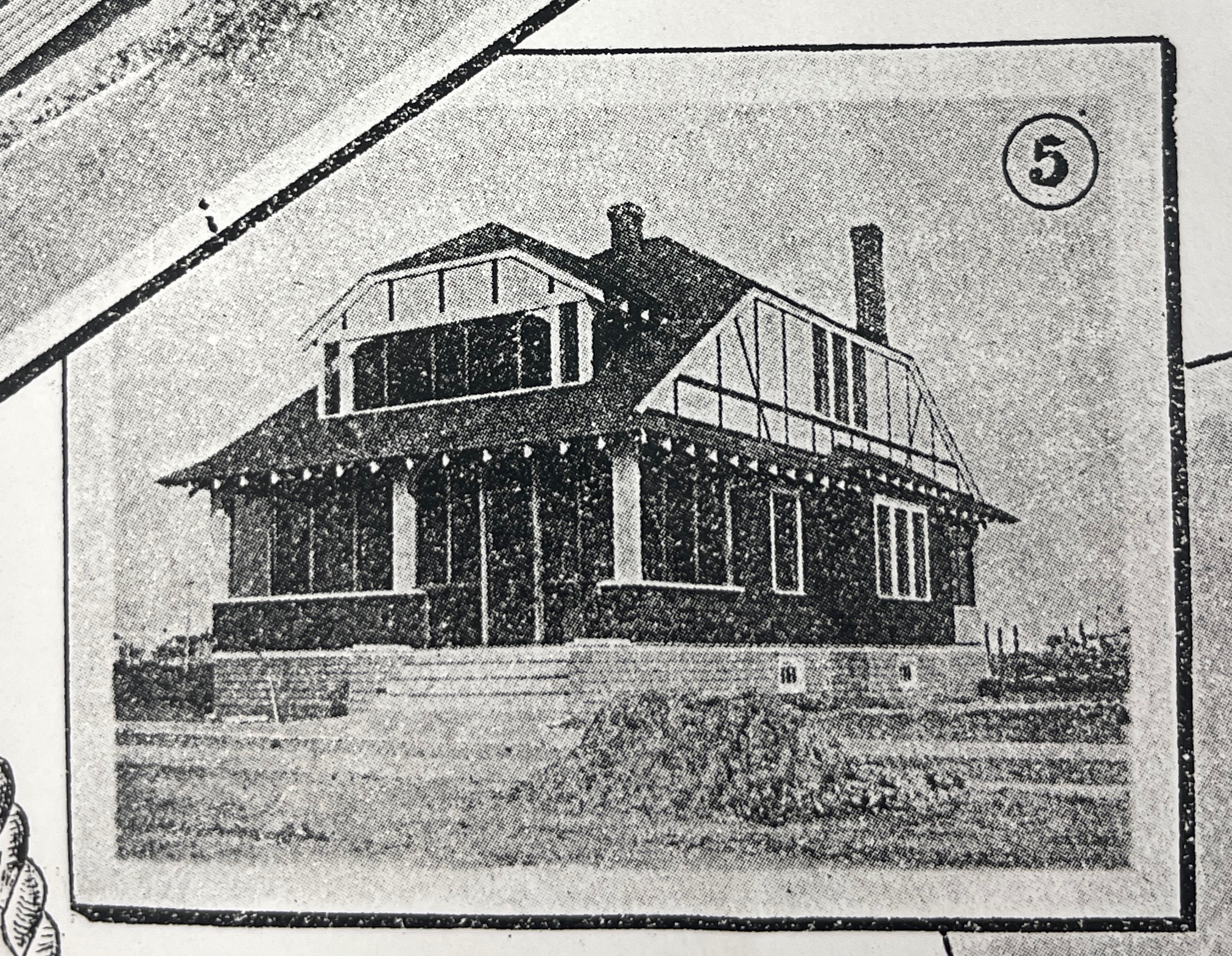
Image No. 5: Pictured here is the Dr. F. G. Allen double front bungalow situated on Golden Gate Road and Pleasure Bay. The two-story frame building contained a large living room with an artistic fireplace, dining room, kitchen, pantry, laundry, two nice bed rooms, bath, a large screened front veranda and rear porch, with enclosed shower bath on first floor. The second floor offered four bed rooms and large screened sleeping logia on both street and water front.
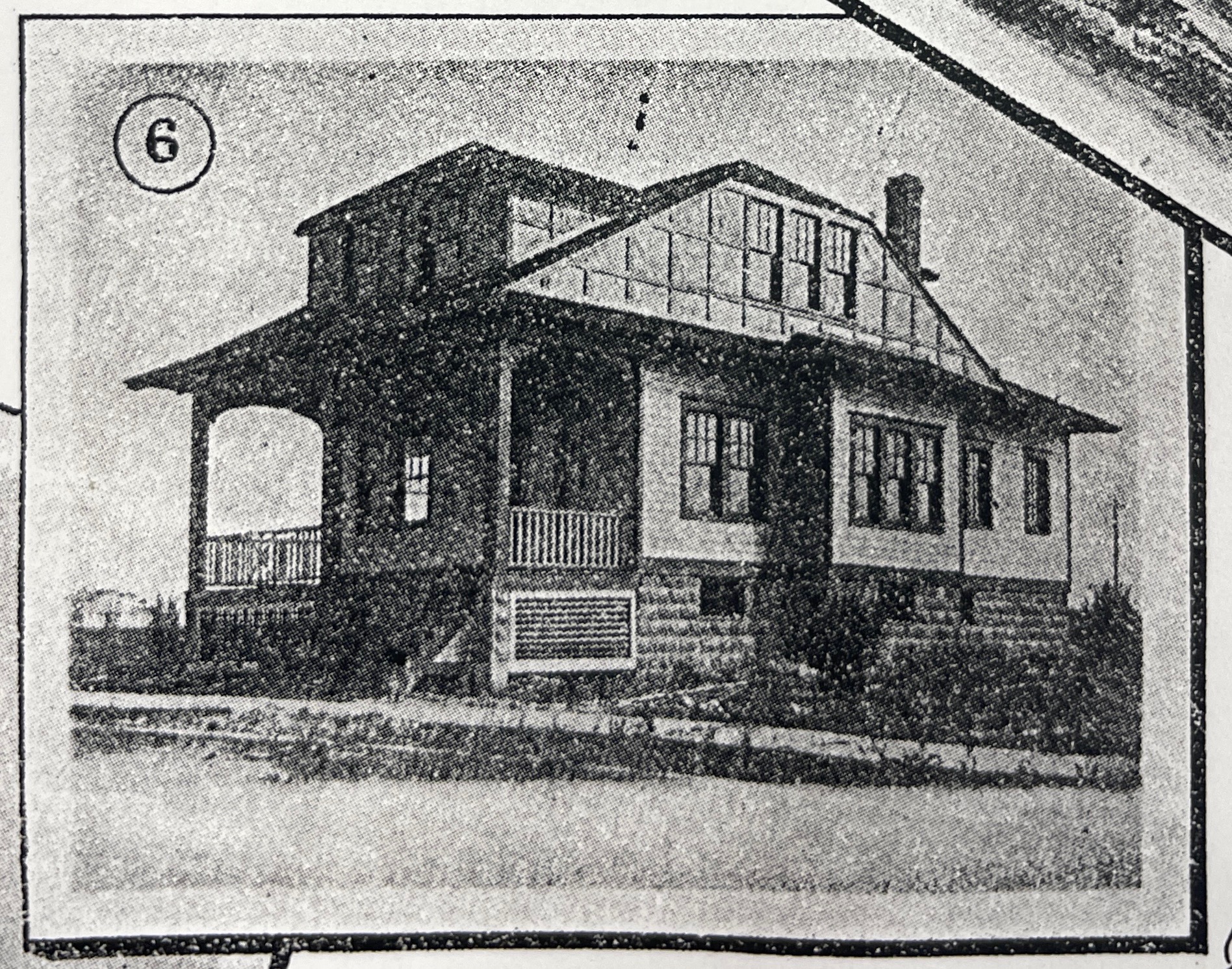
Image No. 6: Next is the stately looking “Old English” cottage owned by the Edwards and located on 103rd Street near Third Avenue. This is a frame structure with a full basement, and containing a living room, dining room, kitchen, pantry, two bed rooms and bath on the first floor. The accommodations on the second floor consisted of two large bed rooms, a large dormitory and balcony. The cottage was equipped with electric light fixtures and all modern conveniences.
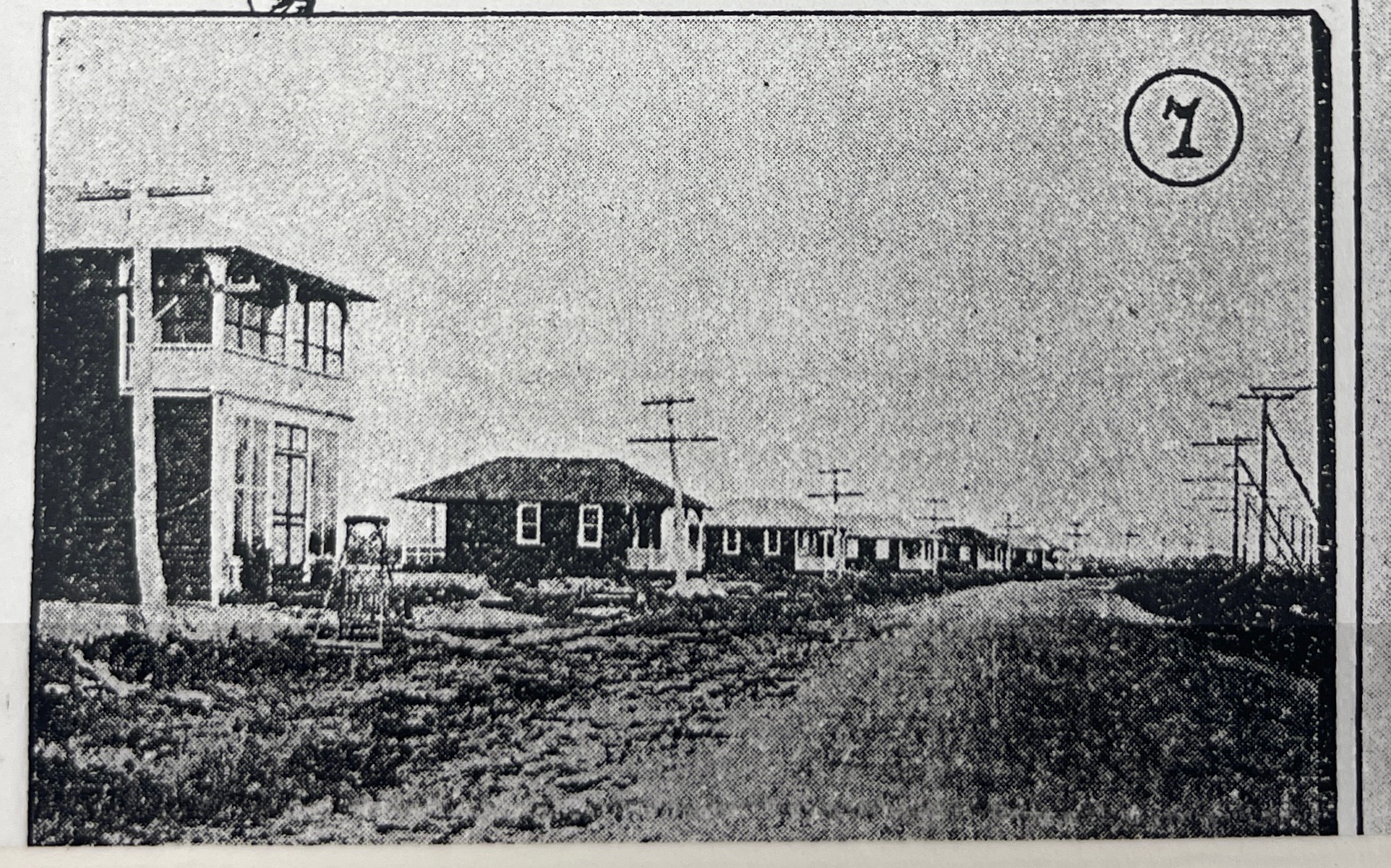
Image No. 7: This image shows the Parkway Bungalows, located on the Stone Harbor Ocean Parkway and is a magnificent automobile boulevard connecting Stone Harbor with the State Ocean Highway. These bungalows form an entire colony in themselves situated at the Scotch Bonnet Bridge just before entering the town. We learn that each of these neat summer homes contained two bedrooms and some even have three, in addition to a large living room and dining room. There was a front porch of generous proportions facing the boulevard (north), while the rear porch faced the Cape May Court House Canal which was a tidewater estuary of the State Inland Waterway. Each bungalow had an outside toilet and they were electrically illuminated and supplied with artesian well water from a special plant situated a short distance from the colony. In addition to the ten bungalows, there was a two-story dwelling (see structure on the far left side of this image) and store midway in the row, the property of George W. Breuker, that contained beside the store, a living room, dining room and kitchen, with a rear porch on the first floor and three bed rooms with screened veranda on the second. There also was a private pier that extended into the canal. These little homes, so conveniently located, formed a very attractive and desirable proposition at $900 for the smaller and $950 for the larger ones, including the lots upon which they stood.
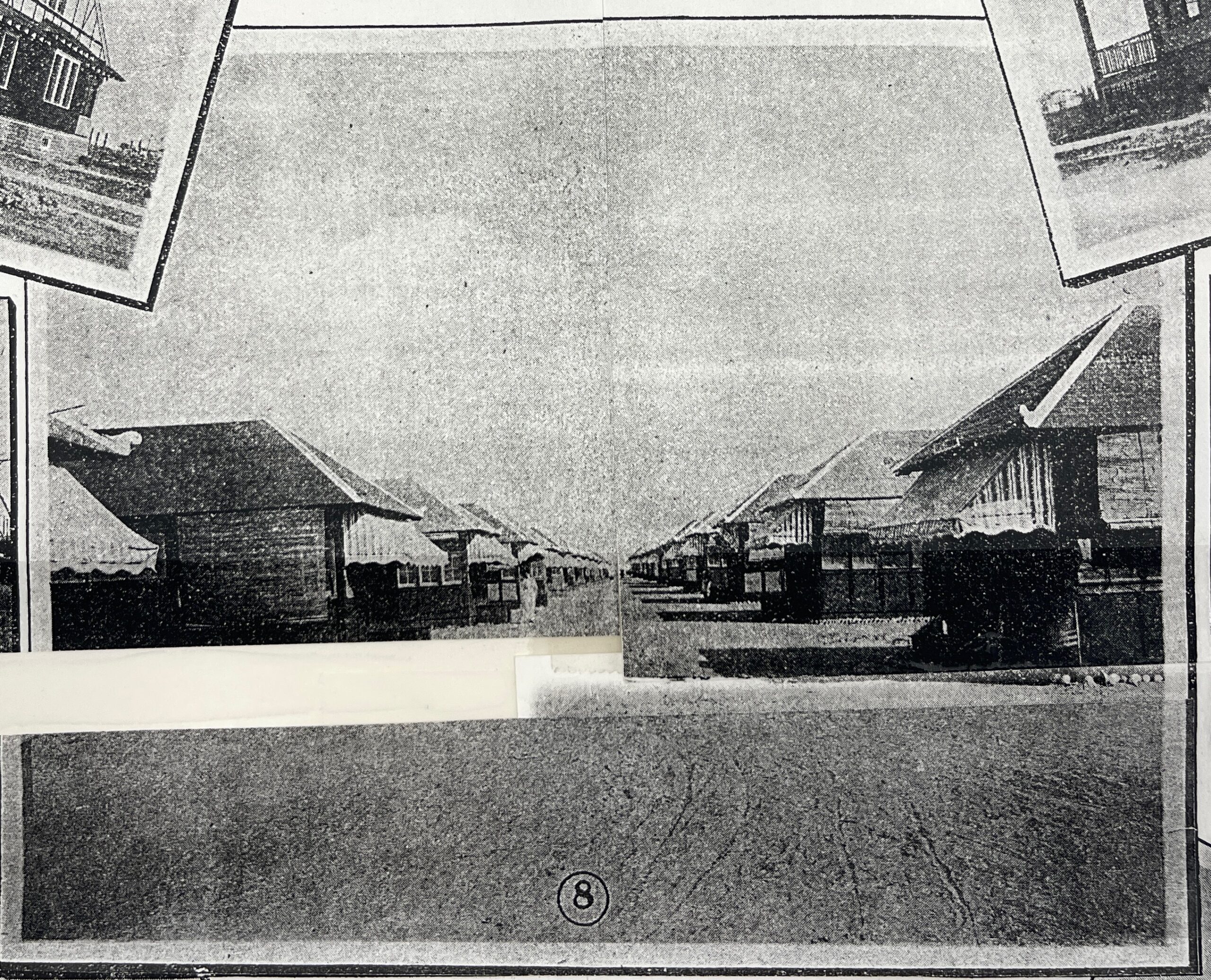
Image No. 8: Here we see another street scene in the now famous Stone Harbor Bungalow Colony located in blocks 107, 108, 109 and 110 and extending from Second Avenue to Carnival Bay. Fifty of these beautiful bungalows were built fully furnished in less than two months and could be occupied during the entire summer season. When all of them were completed there were a total of 84 tiny bungalows in this colony. These represent the nucleus of the housing facilities of the great Chautaugua movement that was under way at that time. It should be noted that each bungalow had the equivalent space of four rooms. The living room, with screens and awnings (see the abundance of the fashionable and cozy looking awnings that served to provide much needed shade during the hot summer afternoons) was in turn an enclosed veranda and a sleeping room. There also was a bed room in the rear of the bungalow, a kitchenette, dining room, storage space, shower bath, toilet, electric lights, running water from the main artesian well over 800 feet deep, and each house was connected with the sanitary sewerage system of the borough. “Built like a yacht in the matter of convenience and the conservation of space, these cozy bungalows had to be seen to be appreciated.”
Nine hundred and fifty dollars for one of these little summer homes and the lot upon which it stands was certainly cheap when one considered the trend of municipal improvements that were underway and the fact that the great artery of automobile traffic, the Inter-resort Bridge and Boulevard System, all passed directly through the colony via Third Avenue. Provisions were made for the rental of these bungalows for stated periods through the ownership of one or more shares in the corporations on an easy deferred payment plan, for a nominal sum per week. Illustrated literature giving every detail that was available was simply supplied upon receipt of postal card mailed to the Stone Harbor Bungalow Colony, Inc., 139 South Third Street, Philadelphia. So popular were the bungalows that in the previous summer an additional hundred bungalows could easily have been disposed of had it been a physical possibility to have erected them in time. A number were sold out right as soon as completed.
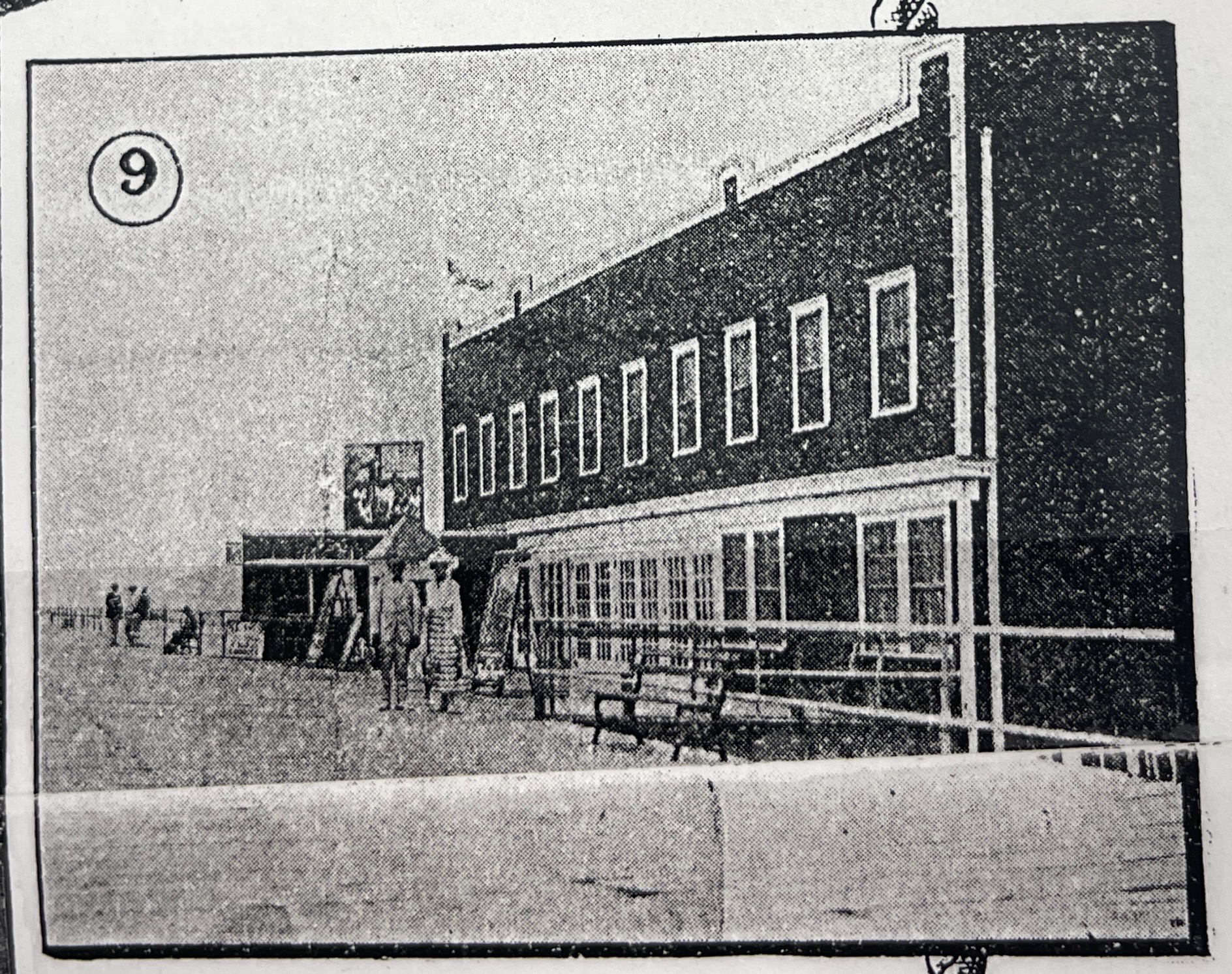
Image No. 9: This most interesting image portrays the Stone Harbor boardwalk and the new Casino built by Dr.
Watkins. It was the first building to actually be erected on the boardwalk, and could be reached with convenience via either the 96th or the 99th Street approach, from any point in the center of the borough. The Casino contained in addition to confectionery and ice cream privileges, a number of games, including the new and popular Skee Ball. (For your information, the regulation game of skee ball is quite simple. Players roll balls that are 3.25 inches in size up a ramp and aim for holes with different point values. The most common machine has 7 spots with the center hole worth the most points. Players usually have 9 balls to play with and the goal is to score as many points as possible.) In addition, there was a wonderful dance floor large enough for the most pretentious ball as dancing was at this time so very popular. In the auditorium, there was a motion picture theatre equipped with a large metallic screen and the latest projectors, having a large seating capacity and playing only the best current productions of filmdom. It should be noted that most of the early films were of the silent variety during the 1910s to the late 1920s. In small movie theatre settings silent movies were almost always accompanied by live music such as a pianist or organist.
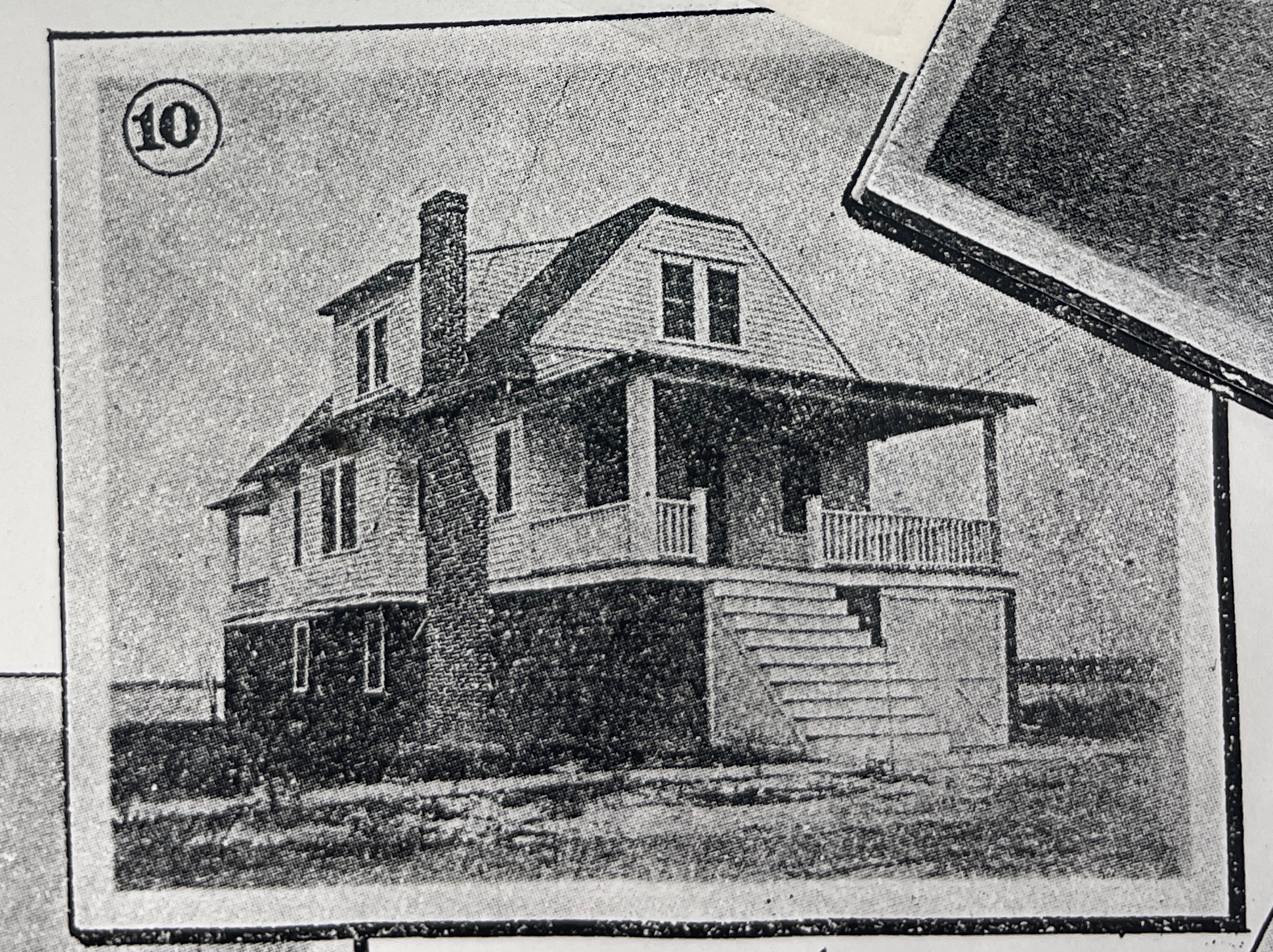
Image No. 10: Now we see the Brooks Cottage located on Sunset Drive near 99th Street, fronting on both the street and the Great Channel. This two-story frame cottage came with a garage and a basement under. The first floor contained a large living room with fireplace, dining room, kitchen, pantry, one bed room and bath while on the second floor there were three bed rooms and a veranda the full width of the building on both channel and street fronts.
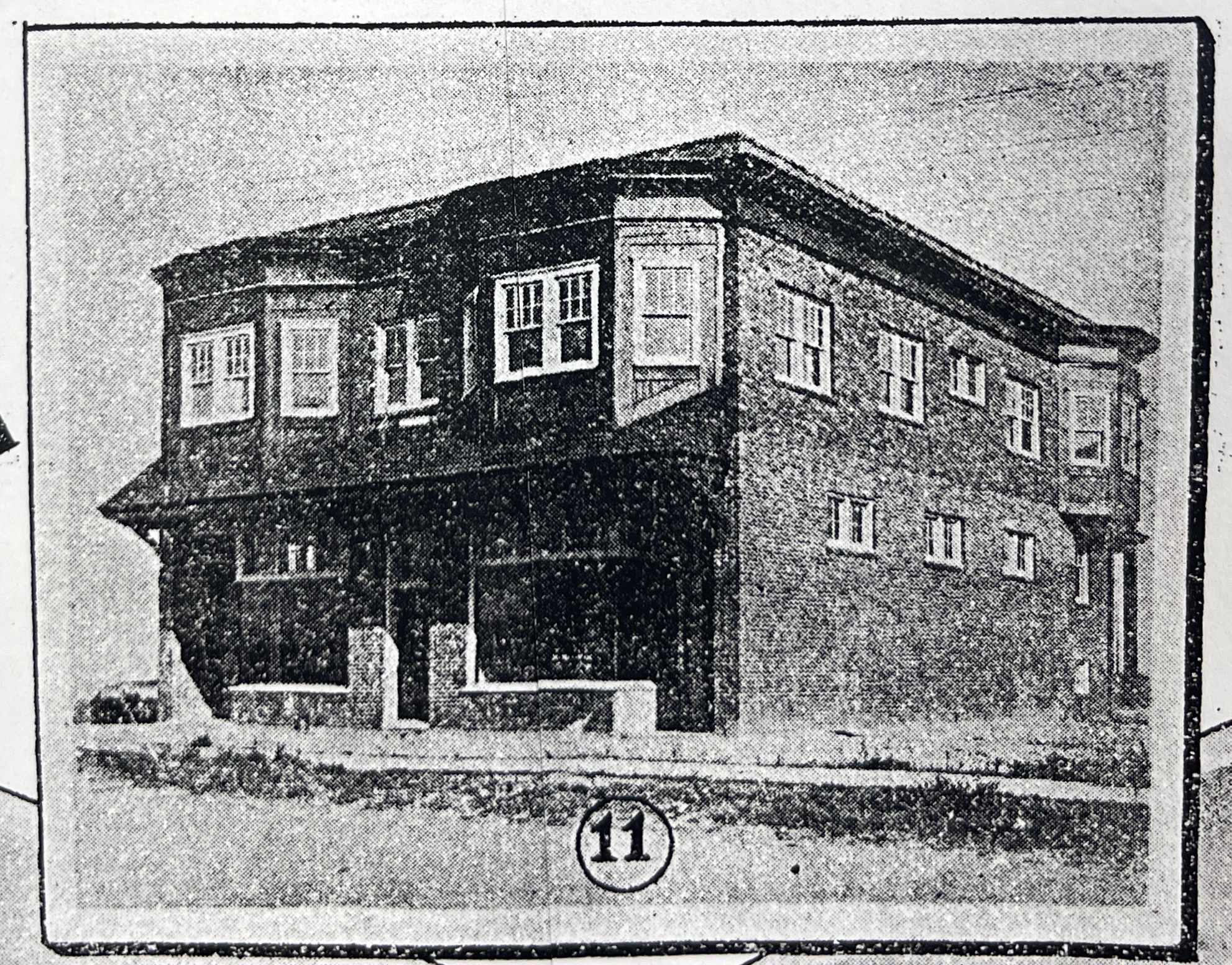
Image No. 11: This very large structure known as the Funk, Smith and Ernest Building on Third Avenue near 96th Street was a two-story brick building with rear basement. The first floor contained two large store rooms, each with a large rear room and toilet. The second floor included two large apartments. Each had front and rear entrances, a reception hall, large living and dining rooms, kitchen, two bed rooms, bath and all conveniences. A veranda (customarily a roofed, open gallery or portico attached to the exterior of a building) extended completely across the rear of the building.
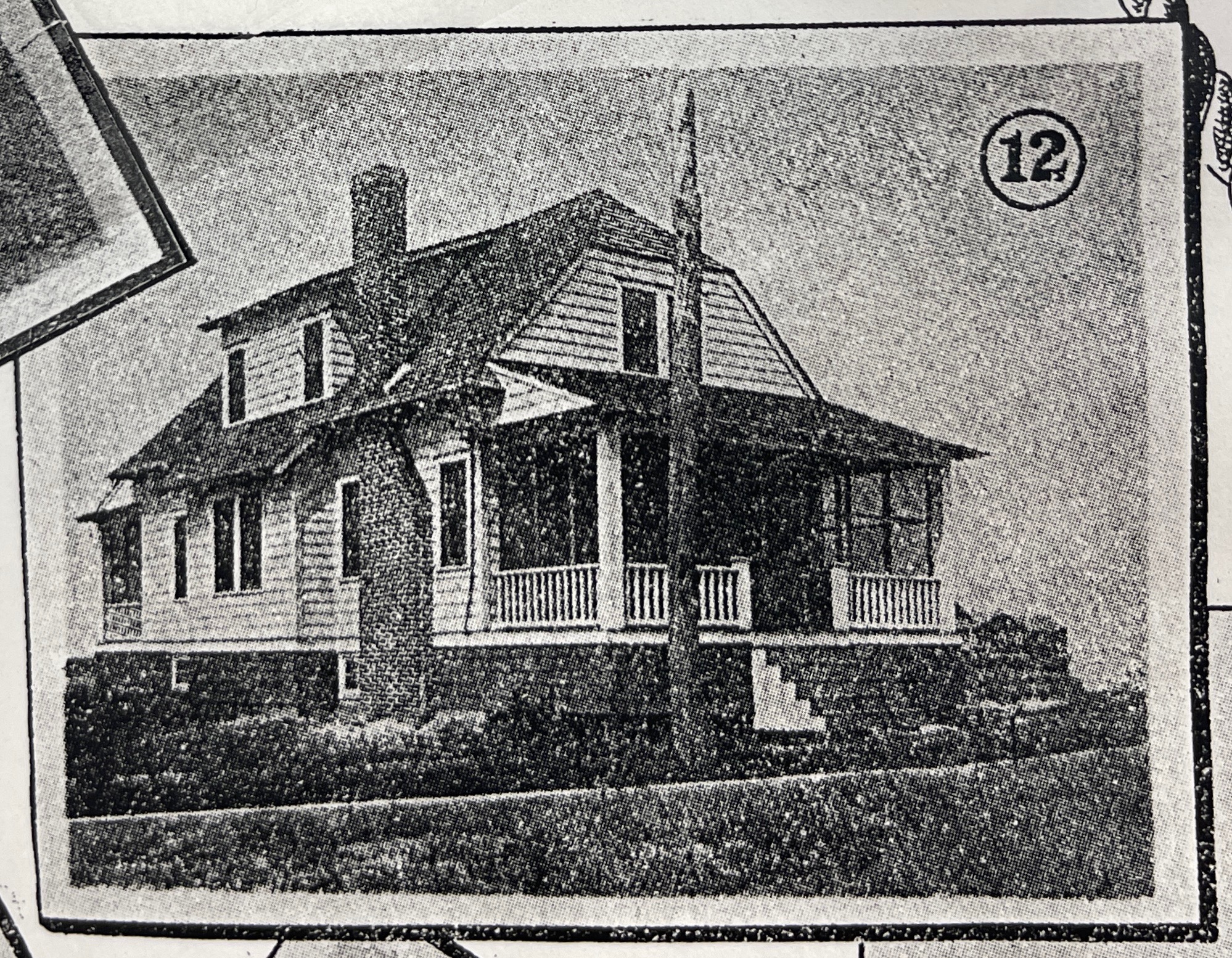
Image No. 12: This image depicts the Boniface Cottage located on Sunset Drive near 99th Street and faces both street and the Stone Harbor Yacht Basin. With the exception that the basement does not contain the garage feature, the building shown here is in general construction, similar to the Brooks Cottage (please refer back to previously shown image No. 10).
Note: There is no image No. 13 as it was purposely omitted.
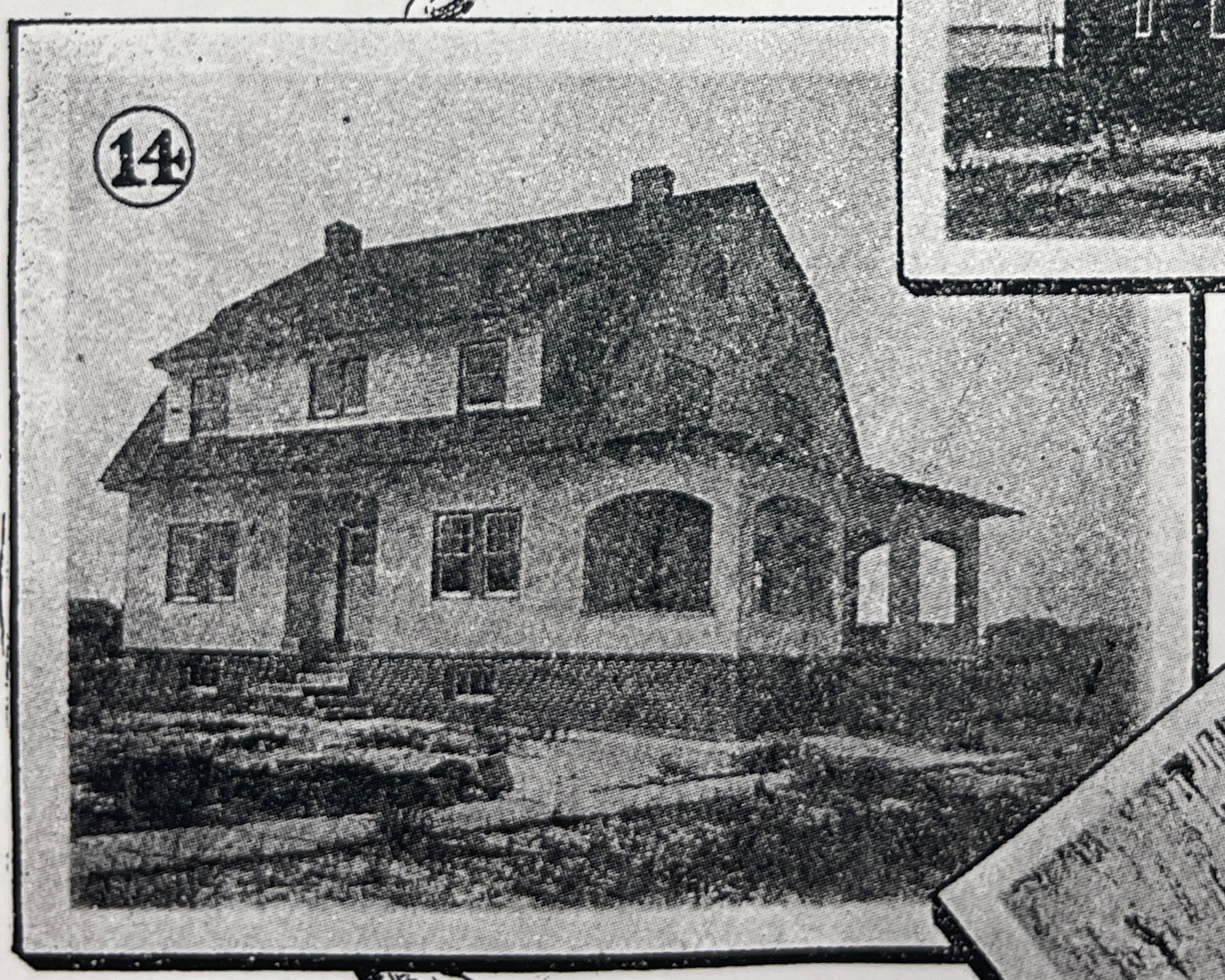
Image No. 14: The “twin houses” of Thos. Scully on the north side of 94th Street near Third Avenue are very modern and attractive. The construction is stucco over wire-covered waterproofed surface. This building had a full seven-foot basement with water-tight cement floor and each side featured a large living room, with mantel and colonnade (a series of columns set at regular intervals and usually supported the base of an overhanging roof structure).
There also was a Dutch hall entrance, dining room, kitchen and pantry on the first floor. On the second floor there were three large bed rooms with bath and a large, airy attic above. Each dwelling had a private veranda, grade entrance to the basement, which included a
laundry, shower bath and dressing room. Especially noteworthy, there was also a complete heating system, as these houses were built for all year-round occupancy.
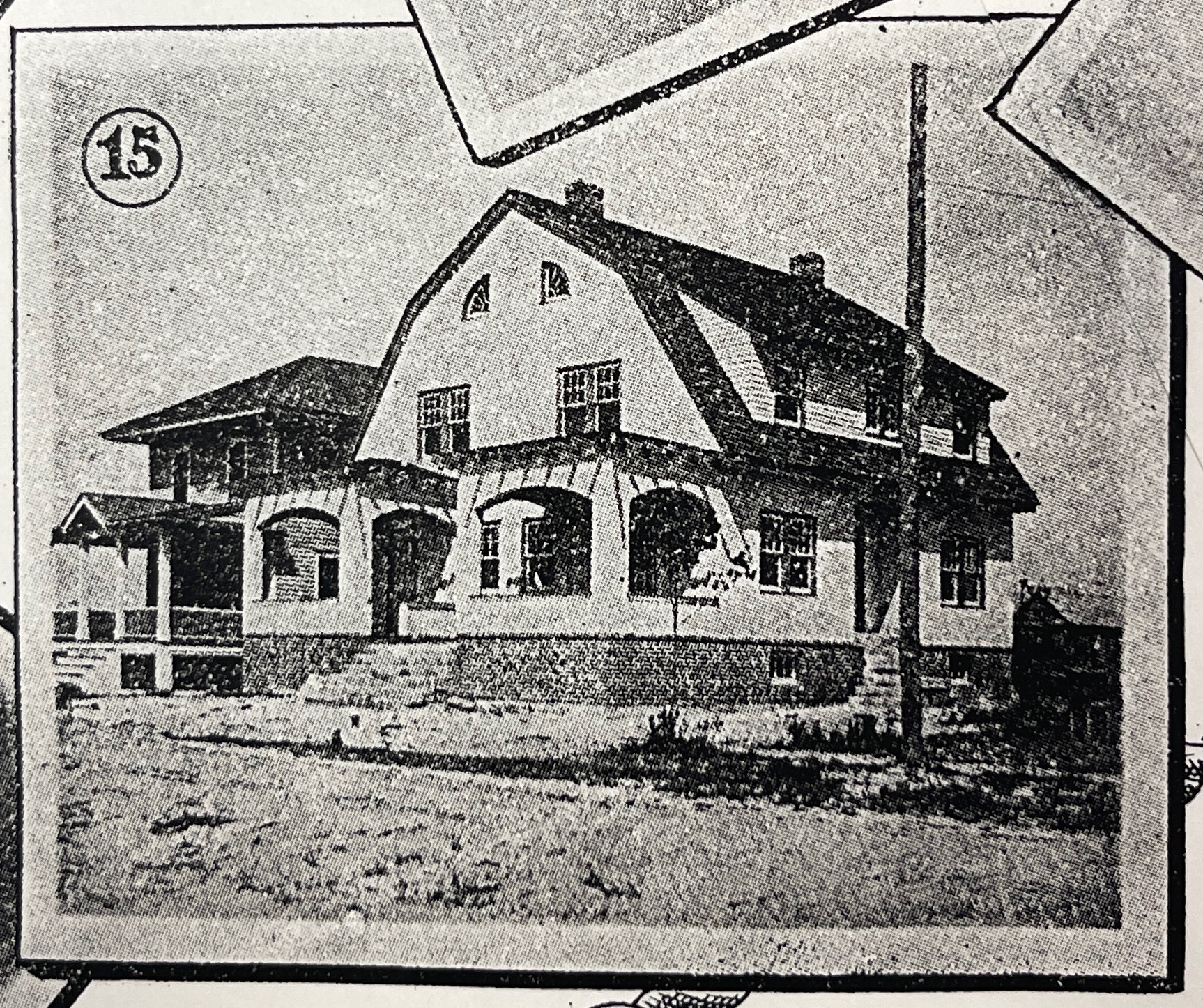
Image No. 15: Here we have the “twin houses” of James O’Kane on the south side of 94th Street, nearly opposite those of Mr. Scully (see image No. 14), and in general construction they were identical. In addition to being of the most modern type, these houses were in an exceptionally desirable location.

Image No. 16: The Rev. John and Levi Hainer’s double front bungalow on Sunset Drive and Stone Harbor Yacht Basin at 100th Street, was a unique frame structure of attractive design. The large living room, with fireplace, which faced on Sunset Drive, had three entire sides broken up by windows which, when opened, converted the living room into a screened porch. The dining room, which faced on the Basin, was of like character. There were three nice bed rooms, kitchen, bath room with shower, and dressing rooms, and above these was an attic for storage and other purposes.
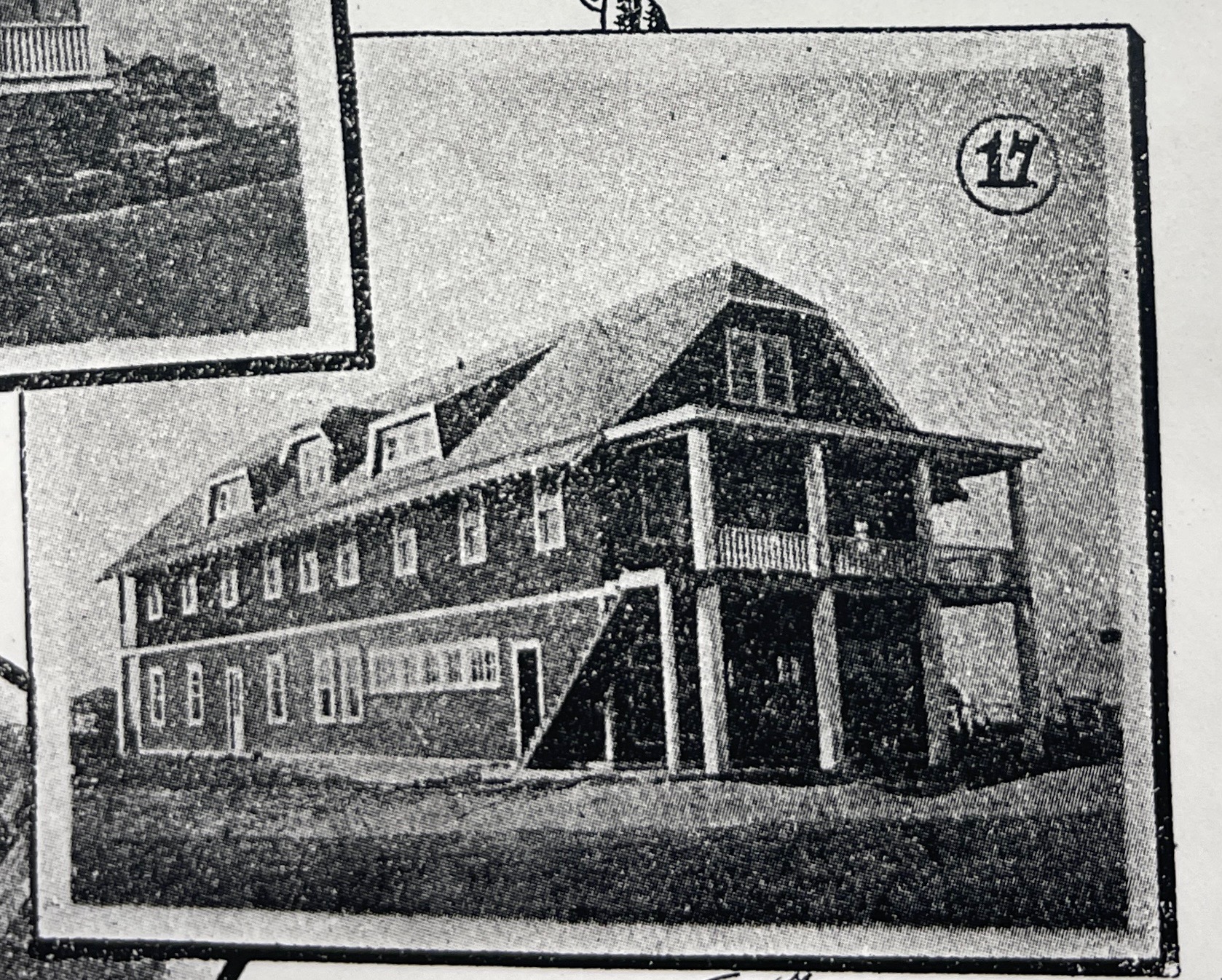
Image No. 17: The hotel “Big Stick,” was the newest of Stone Harbor’s hotels, and it was the property of Geo. V. Haslett, located on 97th Street above Third Avenue, and conveniently situated near all trains and boats. This house had sixteen bed rooms, two dining rooms, a billiard room, baths, and all modern conveniences. The reservation rate in 1916 was $2 per day and up, single, but special rates were made for parties and families. The plan that was available was known as the “American Plan” and the home-cooked food that was provided at the Big Stick was known to be excellent.
Incidentally, and for the record, I would be remiss if I did not go on to at least mention that the hotel “Big Stick” would later in time assume two more names and go on to also be called “Haslet’s Hotel” and then the “Sherwood House”. Unfortunately, this building no longer stands today.
CONCLUSION: Finally, one highly useful source of information that I recently discovered from the 1915-16 era at the Stone Harbor Museum archives succinctly and aptly said it best, and I quote: “Everywhere the sound of saw and hammer is heard. On all sides new buildings are going up. The very atmosphere seems tingling with life and pulsating with energy and activity”!
